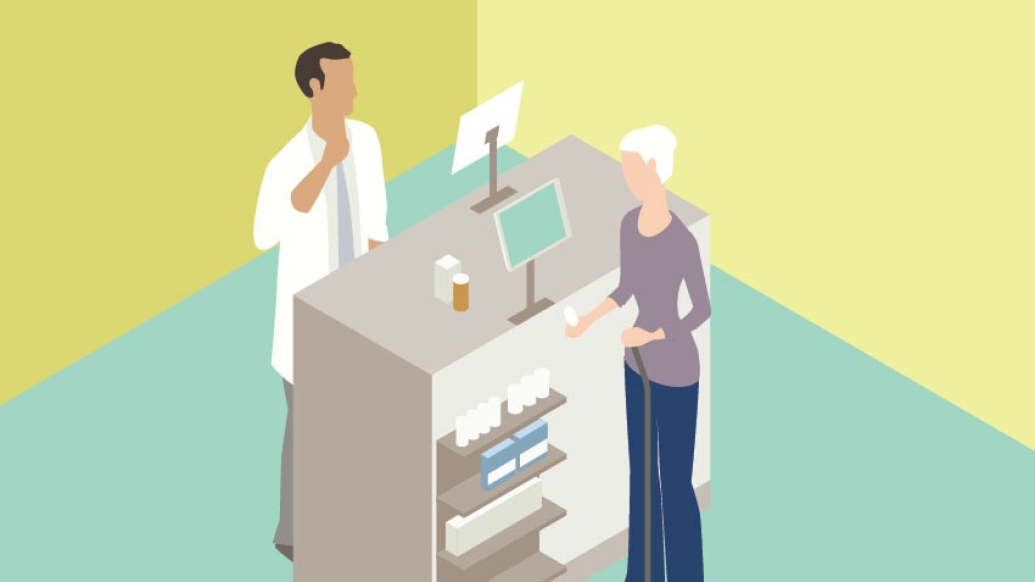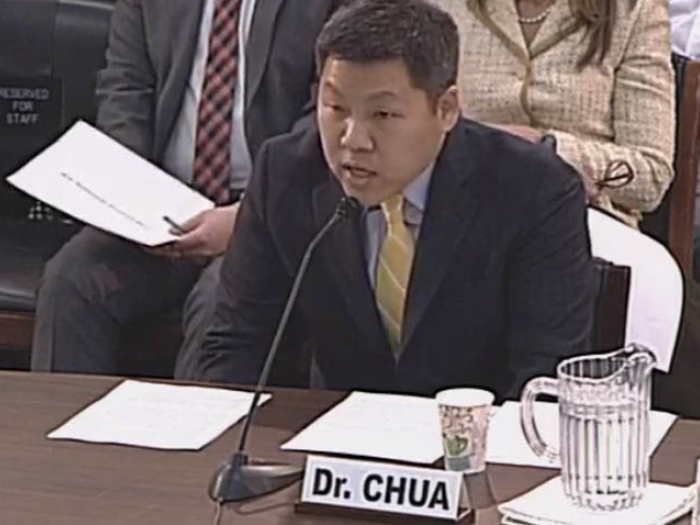Insurance records reveal patterns of opioid prescribing to patients whose family members “shop” for opioids from multiple sources
12:38 PM
Author |

As states crack down on doctor and pharmacy "shopping" by people who misuse opioids, a new study reveals how often those individuals could find opioids to misuse in their family medicine cabinets.
For every 200 patients prescribed opioids in 2016, one had a family member whose opioid-misuse problem led them to seek the drugs from multiple prescribers and fill prescriptions at multiple pharmacies to avoid detection. If these family members have access to the patient's opioids, this could increase their risk of misuse and possibly overdose.
LISTEN UP: Add the new Michigan Medicine News Break to your Alexa-enabled device, or subscribe to our daily audio updates on iTunes, Google Play and Stitcher.
The University of Michigan team that published the findings in JAMA Network Open notes the new research highlights the need to decrease the amount of opioid medication available for this kind of diversion, by avoiding unnecessary opioid prescribing in the first place.
The findings also highlight the importance of helping patients understand safe storage and disposal practices for their opioid medications to prevent misuse by family members.
"Our study demonstrates yet another reason why clinicians should not overprescribe opioids," says Kao-Ping Chua, M.D., Ph.D., the U-M pediatrician and healthcare researcher who led the study.
Small percentages, but large implications
The study is the first to look at doctor and pharmacy shopping within families. The team focused on opioid prescription-filling patterns by 554,000 privately insured people and relatives covered under the same family insurance plan.
They used a conservative definition of "shopping" behavior, counting only people who had received opioid prescriptions from four or more prescribers and filled them at four or more pharmacies, in the past year.
Of the 1.4 million opioid prescriptions for the 554,000 patients in 2016, 0.6 percent, or 1 out of 167, were filled when a family member met criteria for doctor and pharmacy shopping. And the researchers argue that this likely underestimates the size of the problem due in part to their conservative definition.
Because so many Americans receive opioid prescriptions each year, even a modest percentage like 0.6 percent implies that 1.2 million of the 210 million opioid prescriptions in 2016 may have been dispensed to people who have family members with doctor and pharmacy shopping behavior.
MORE FROM MICHIGAN: Sign up for our weekly newsletter
For opioid prescriptions to children, 0.2 percent were filled when the child met doctor and pharmacy shopping criteria.
However, according to Chua, "This apparent doctor and pharmacy shopping behavior in children is likely driven by an adult family member, since children can't obtain opioid prescriptions from multiple prescribers and fill them at multiple pharmacies on their own."
In contrast, 0.7 percent of opioid prescriptions to children went to those who had a family member that met doctor and pharmacy shopping criteria. Most of those family members were in their early 40s, and although Chua and his colleagues can't be sure from the data source, they believe these are mostly the children's parents.
When the researchers changed their definition of "doctor and pharmacy shopping" to receiving opioid prescriptions from three or more prescribers and filling them at three or more pharmacies in the past year, 1.9 percent of opioid prescriptions were filled by patients who had family members meeting shopping criteria.
Chua also notes that the study does not track opioid prescriptions that were paid for out-of-pocket, rather than using insurance.
Message for clinicians
Chua notes that 39 states now specify situations in which physicians, physician assistants and nurse practitioners must check their state prescribing databases before prescribing opioids and other controlled substances. Many states also have requirements for pharmacists to check before dispensing an opioid.
These systems, called prescription drug monitoring programs, allow providers to see if the patient has already received opioid prescriptions from multiple prescribers and filled them at multiple pharmacies.
Chua and his colleagues note that it's not likely that privacy laws such as HIPAA will change to allow providers to check these databases to look for "shopping" behavior among their patients' relatives, even for children. Also, it may be difficult for clinicians to predict which patients have family members engaged in doctor and pharmacy shopping.
Chua argues that to prevent opioids from being misused by family members engaged in doctor and pharmacy shopping, the most effective step clinicians can take is to avoid opioids when over-the-counter alternatives are equally effective at controlling pain and to avoid prescribing more doses of opioids than patients need.
Chua notes that counseling on safe storage and disposal should always be done when prescribing opioids and may also help prevent opioid misuse within families. However, he believes this counseling may be less effective at preventing misuse of opioids for children.
"With children, the person receiving counseling on opioid storage and disposal is usually an adult family member like a parent. The problem is that this adult family member could be the person with doctor and pharmacy shopping behavior," said Chua, who sees patients at a pediatrics clinic of Michigan Medicine, U-M's academic medical center.
Chua and several of his co-authors are members of the U-M Institute for Healthcare Policy and Innovation and the Susan B. Meister Child Health Evaluation and Research Center.
In addition to Chua, the study team included U-M opioid researchers Amy Bohnert, Ph.D., the study's senior author, Chad Brummett, M.D., and Rebecca Haffajee JD, Ph.D., M.P.H.; CHEAR director Lisa Prosser, Ph.D., and Rena Conti of Boston University.
DOI: 10.1001/jamanetworkopen.2019.3673

Explore a variety of healthcare news & stories by visiting the Health Lab home page for more articles.

Department of Communication at Michigan Medicine
Want top health & research news weekly? Sign up for Health Lab’s newsletters today!





